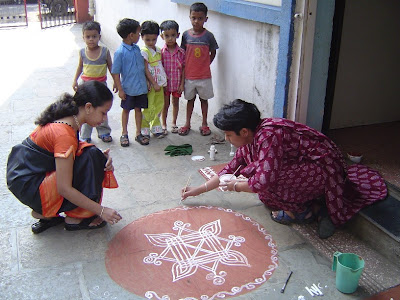Last week, I visited my friend Nirupama in Dadar. It was 10:00 in the morning. "Where is your son?", I asked her. "Oh, that Kumbhakarna? He's still asleep", she said in Marathi. We both laughed. She was referring to the demon Kumbhakarna who slept for 6 months in a year, and could only be woken up with loud drumbeats and trumpets.

As I walked home, I thought about how Indian languages, even in common usage, are rich in mythology, and how a single mythological reference easily conveys a wealth of meaning.
I remember my grandmother, who was laid down by cancer in her later years, referring to my mother as Bhoomadevi - Mother Earth, for all the burdens she shouldered so patiently.
A short-tempered neighbour, known for his loud outbursts, earned the name Narasimha - Man-Lion. As kids, we used to be very amused, imagining him as Narasimha, the fearsome form of Vishnu, half-man, half-lion. Just as Narasimha refused to calm down even after destroying the demon Hiranyakashipu, our neighbour refused to be quiet even when his entire household had beaten a thorough retreat.

With a mythology as rich as ours, there is no end to amusing metaphors. Take for example, my food-loving cousin. Whenever he visited someone, he would always check with the lady of the house whether anything good was being served that day. Naturally, the elders often said to him "Don't be such a Bakasura!".
Similarly, I have heard wily women being referred to as Manthara, and short men as Vamana or Agastya. And of course, scheming men are universally described as Shakuni.
In modern times, these rich metaphors have taken on interesting shapes. Indian languages have begun to reflect more recent personalities and characters.
My colleague Deshpande was known for his truthfulness. "Oh, that man? He is such a Gandhi!" is how people described him. The tone would be sarcastic or humorous, and usually hinted that although Deshpande's integrity was high, he was somewhat out of touch with reality.
I have also heard households where the woman's voice is supreme being described as under 'Indira Gandhi Raj'. I'm sure, in a few years, 'Sonia-ji' will come to mean a woman who wields the real power from behind the scene!
Perhaps I should compile a new dictionary with all these fascinating metaphors, old and new. What do you say?











